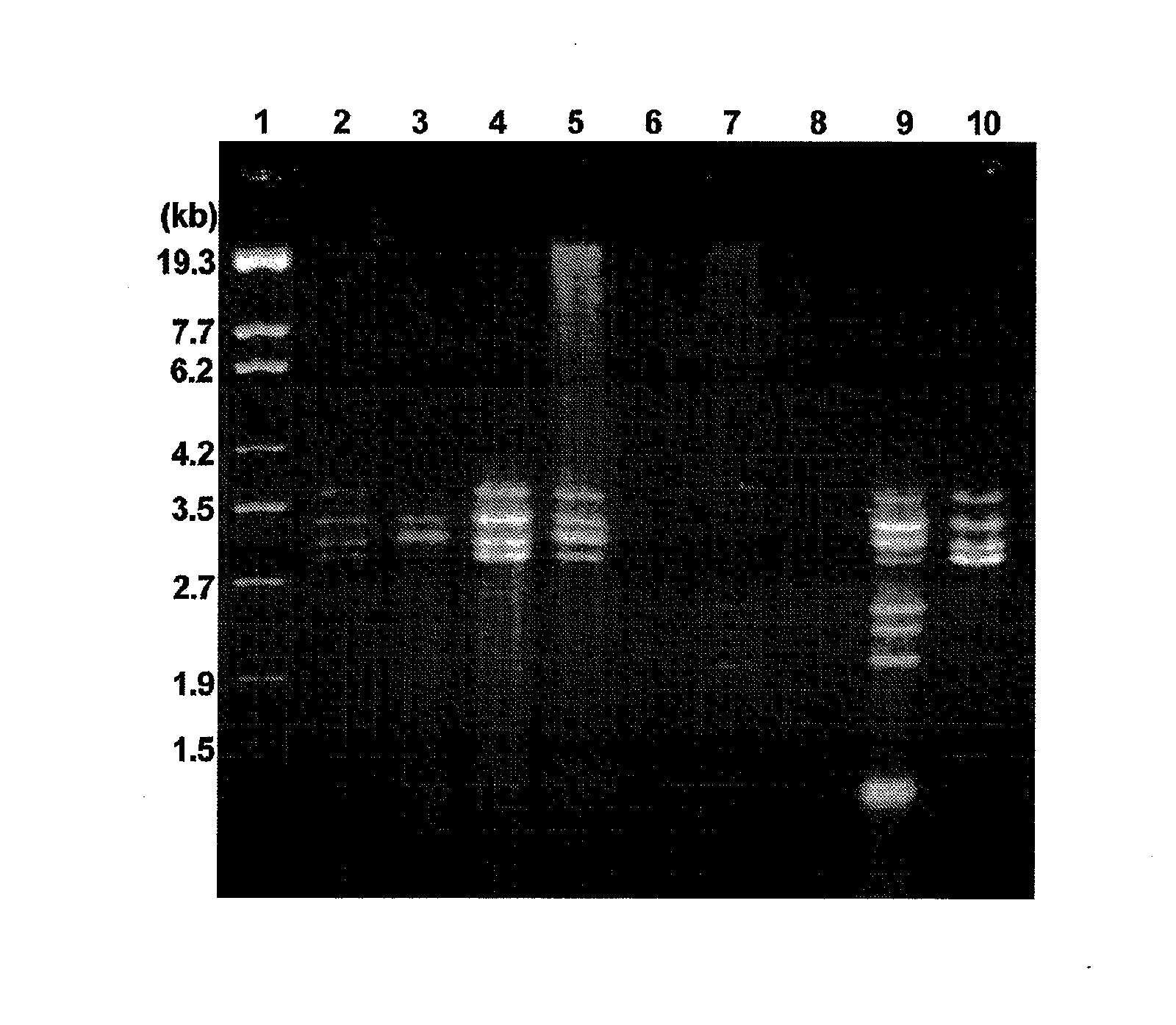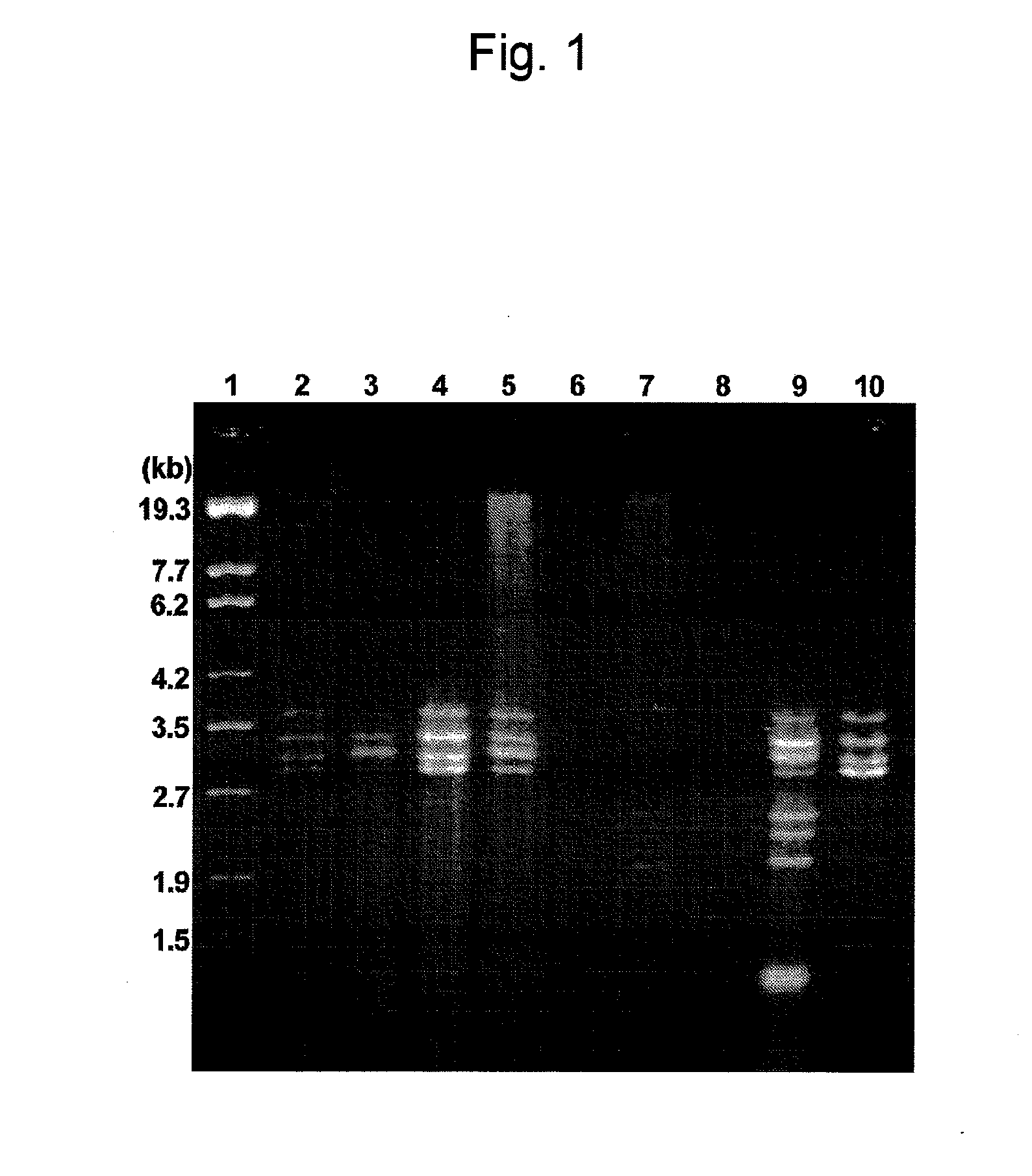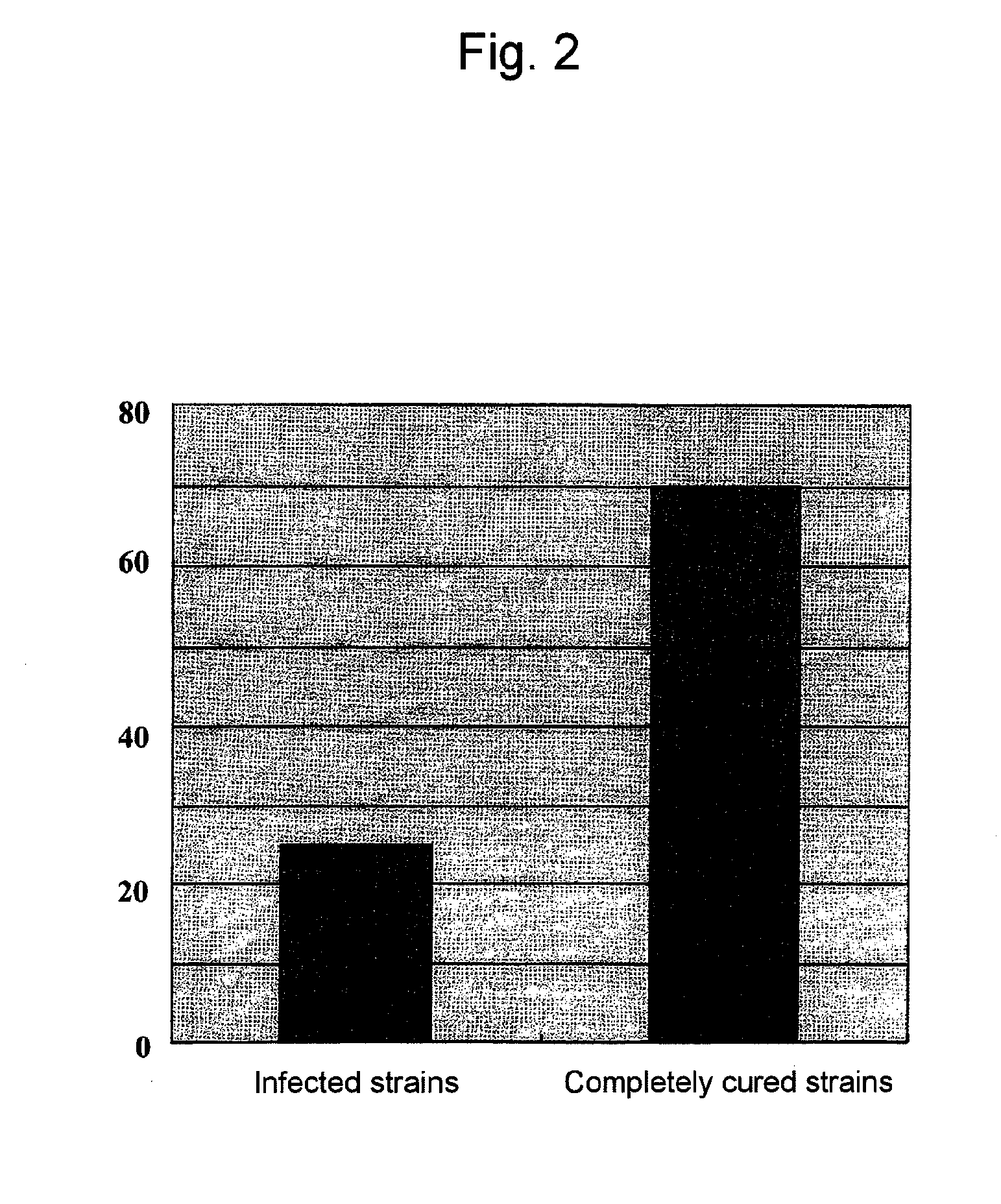Novel mycovirus, attenuated strain of phytopathogenic fungus, plant disease controlling agent, method of producing mycovirus, method of attenuating phytopathogenic fungus and method of controlling plant disease
a technology of phytopathogenic fungus and mycovirus, which is applied in the field of new mycovirus, can solve problems such as serious economic impact, and achieve the effect of easily and highly efficient control of plant diseases
- Summary
- Abstract
- Description
- Claims
- Application Information
AI Technical Summary
Benefits of technology
Problems solved by technology
Method used
Image
Examples
example 1
[0070]In Example 1, detection of endogenous double-stranded RNAs from 57 rice blast fungal strains was attempted.
[0071]First, respective fungal bodies of 57 independently collected strains of rice blast fungus were milled, and after extracting nucleic acids by a phenol-SDS method, DNAs and single-stranded nucleic acids were selectively digested by DNase 1 and S1 nuclease to obtain a solution of double-stranded RNAs endogenous to the fungal bodies. Electrophoresis using a 1% agarose gel was performed at 20V for 18 hours and staining by ethidium bromide was performed.
[0072]As a result, double-stranded RNA bands were detected in 11 of the 57 strains. Of these, bands of four components were detected at 2.8 to 3.6 kb in 7 strains, bands of three components were detected at 1.0 to 2.6 kb in 3 strains, and bands of eight components were detected at 1.0 to 3.6 kb in 1 strain.
[0073]FIG. 1 is an electrophoresis photograph of results of double-stranded RNA detection for 9 of the 57 rice blast ...
example 2
[0075]Based on the results of Example 1, growth rates of strains containing the double-stranded RNAs endogenously and strains not containing any double-stranded RNAs endogenously were compared in Example 2.
[0076]Fungal strains with which endogenous double-stranded RNAs were detected and fungal strains with which endogenous double-stranded RNAs were not detected in Example 1 were cultured in a PDA medium and colonies were observed after 6 days and after 10 days from the start of culturing.
[0077]As a result, with fungal strains with which endogenous double-stranded RNAs were not detected, hyphae grew in concentric circles and pigmentation was uniform. On the other hand, with fungal strains with which endogenous double-stranded RNAs were detected, growth was slower than fungal strains with which RNAs were not detected, hyphae grew non-concentrically, and pigmentation was non-uniform. Also, abnormal development of aerial hyphae was seen and sector formation and lysis were observed.
[0078...
example 3
[0079]In Example 3, preparation of mycovirus-cured strains by treatment of fungal strains endogenously containing the double-stranded RNAs with low-concentration cycloheximide (protein synthesis inhibitor) was attempted.
[0080]YG plates with 0.25 to 0.50 μg / ml of cycloheximide added were prepared and the strains cultured in Example 2 (strains with which endogenous double-stranded RNAs were detected) were transferred to these plates. Of the formed colonies, portions that recovered to normal growth were transferred to separate YG plates to obtain cycloheximide-treated fungal strains. As a result, the cycloheximide-treated fungal strains exhibited better growth than normal rice blast fungal strains.
[0081]Next, from the cycloheximide-treated fungal strains obtained, extraction of double-stranded RNA and detection of double-stranded RNA bands by electrophoresis were attempted using the same methods as those of Example 1. As a result, bands of double-stranded RNA were not detected from the...
PUM
| Property | Measurement | Unit |
|---|---|---|
| Digital information | aaaaa | aaaaa |
| Strain point | aaaaa | aaaaa |
Abstract
Description
Claims
Application Information
 Login to View More
Login to View More - R&D
- Intellectual Property
- Life Sciences
- Materials
- Tech Scout
- Unparalleled Data Quality
- Higher Quality Content
- 60% Fewer Hallucinations
Browse by: Latest US Patents, China's latest patents, Technical Efficacy Thesaurus, Application Domain, Technology Topic, Popular Technical Reports.
© 2025 PatSnap. All rights reserved.Legal|Privacy policy|Modern Slavery Act Transparency Statement|Sitemap|About US| Contact US: help@patsnap.com



